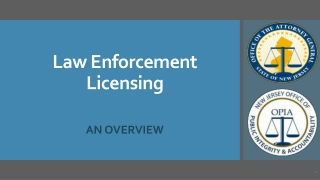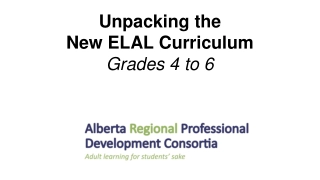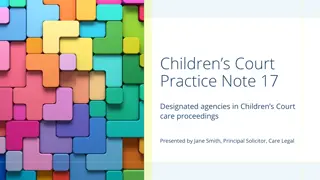Outlining
Outlining is a crucial aspect of organizing and synthesizing course materials effectively. Learn how to create a structured framework, take good class notes, and incorporate supplemental materials into your outlines to enhance your understanding and retention of the subject matter.
Download Presentation

Please find below an Image/Link to download the presentation.
The content on the website is provided AS IS for your information and personal use only. It may not be sold, licensed, or shared on other websites without obtaining consent from the author. Download presentation by click this link. If you encounter any issues during the download, it is possible that the publisher has removed the file from their server.
E N D
Presentation Transcript
Outlining is understanding, organizing, and synthesizing material.
Passive Learning Passive Learning vs. vs. Active Learning Active Learning
Create a framework Use the syllabus and casebook to identify topics and subtopics covered in the course. Intentional Torts I. Battery Intent Harmful or Offensive Contact Person
Good class notes are essential!
How to make an outline in 3 easy steps: 1. Create a framework based on your professor s syllabus or the casebook. 2. Take good notes during class. Be sure to note any hypotheticals or policy considerations. Spend 5-10 minutes after each class to review your notes. 3. Once a week, gather any supplemental materials and your notes. Think about what you learned during the week. Then, insert that information into your outline. Be sure to look back over what you have done in past weeks to modify as necessary.
Intentional Torts Intentional Torts I. I. Battery Battery A. Battery is the A. Battery is the intentiona 1. Intent 1. Intent a. a. subjective subjective the defendant actually wanted to cause harmful or offensive contact with the the defendant actually wanted to cause harmful or offensive contact with the person of another. person of another. Vosburg Vosburg v. Putney v. Putney- - D kicked P in shin after class called to order. Ct said D D kicked P in shin after class called to order. Ct said D intended to kick P (even though D didn t intend severe injury). intended to kick P (even though D didn t intend severe injury). b. b. objective objective D committed an act that a D committed an act that a reasonably prudent person reasonably prudent person with ordinary sensibilities would have foreseen sensibilities would have foreseen would cause harmful or offensive contact with the person would cause harmful or offensive contact with the person of another. of another. Garratt v. Dailey Garratt v. Dailey no intent but knew with substantial certainty injury would no intent but knew with substantial certainty injury would occur. D pulled a chair from underneath an elderly lady occur. D pulled a chair from underneath an elderly ladywhen she was about to sit. As a result, lady fell and broke her hip. Although D didn t intend for lady to break hip, reasonably result, lady fell and broke her hip. Although D didn t intend for lady to break hip, reasonably prudent person with ordinary sensibilities could have foreseen with substantial certainty she prudent person with ordinary sensibilities could have foreseen with substantial certainty she would be injured.(pulling a chair usually leads to fall, which in turn leads to an injury.) would be injured.(pulling a chair usually leads to fall, which in turn leads to an injury.) Therefore, D intended to cause the lady s injury. Therefore, D intended to cause the lady s injury. Professor Hypo: Professor Hypo: ******************* ******************* intentional causing of l causing of harmful or offensive contact harmful or offensive contact with the with the person person of another. of another. with ordinary when she was about to sit. As a 2. Harmful or Offensive Contact 2. Harmful or Offensive Contact ******************************* ******************************* 3. Person 3. Person ******************************* ******************************* Ruta Ruta K. K. Stropus Stropus & Charlotte D. Taylor, Bridging the Gap Between College and Law School: Strategies for Success (3 & Charlotte D. Taylor, Bridging the Gap Between College and Law School: Strategies for Success (3rd rded. 2014) ed. 2014)
Use your outline to practice. Practice questions from various study aids (Gallagher library website under Study Aids West Academic Study Aids or also in the stacks) Practice CALI lessons https://lib.law.uw.edu/ Practice past exams https://lib.law.uw.edu/ Bar review company materials for law school



























